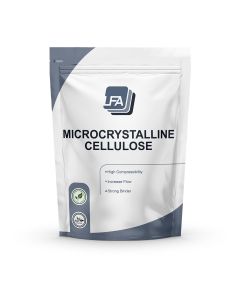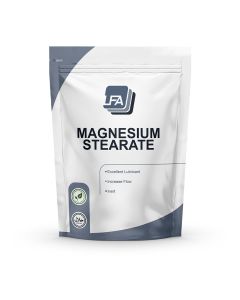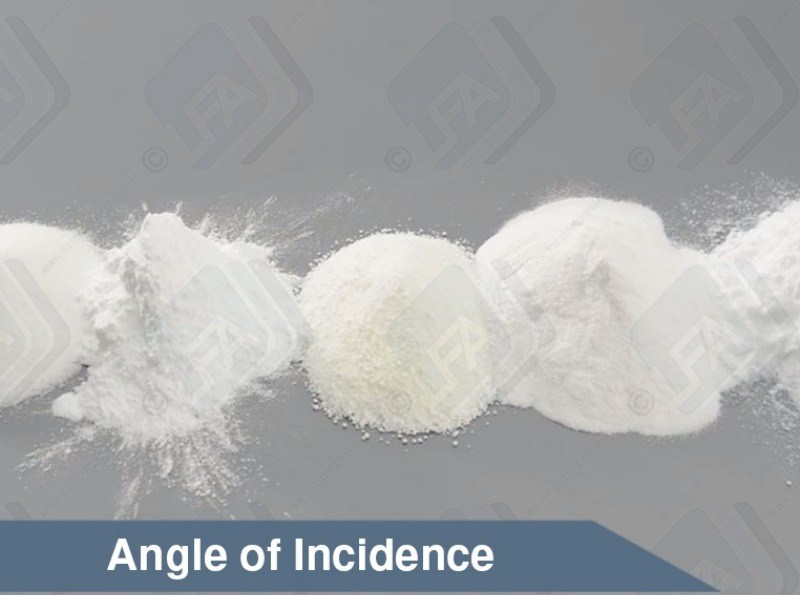乳糖粉末は、消費者に馴染みある製品です。それはさまざまな用途があります。錠剤の風味、食感や色をさらに良くし一般的に非反応性です。
医薬品等級の乳糖粉末は、よく錠剤に使用され不純物混入が低レベルです。乳糖は二糖類という炭水化物です。二糖類とは、糖クラスで2つの単糖類残基を含有するということです。重量に基づき乳の約2~8%を構成します。それは甘さが控え目の可溶性生成物です。乳糖粉末は透明無色で不活性です。製品の安全要素を向上させ製造プロセスをスムーズにします。
乳糖粉末とは
乳糖は乳で見つかるシンプルな炭水化物です。別名はラクトースです。高温でアミノ酸に反応して還元糖になります。これは、最終的な風味を確定するかもしれません。乳糖粉末を錠剤に使用する場合、直接圧縮法になるでしょう。乾燥乳糖に噴霧するのも無水でも圧縮下で固形化した錠剤にできます。医薬品等級は微粉末ですが、他の乳糖粉末と併用して機能させられます。より小さなメッシュサイズは、混合をより楽でより効率的にし、ずっと粗い等級は流れを良くします。また、乳糖粉末は、糖衣混合物を作るのにショ糖を混ぜることもできます。
さまざまな等級の乳糖粉末の生成は、多大な進歩を遂げてきました。各等級は、乳糖粉末という若干ユニーク形を生みます。これは、より具体的に調乳の特性を付けられるということです。さまざまな各等級は、メーカーの製造法によって異なります。医薬品等級の乳糖は、乳糖を浸し過ぎるために乳清を濃縮させて製造されています。
打錠中は、エンドユーザーの意見を考慮に入れなければなりません。乳糖粉末は、多くの用途で使用される有名な成分で消費者に親しまれています。自覚すべきある問題は、乳糖不耐症を患う消費者です。彼らがこの成分を摂取すると、激しい腹痛、下痢や腹部の膨張を招く恐れがあります。
医薬品等級の乳糖粉末は、涼しく暗い場所に保管しなければなりません。温度は27℃以下で、高湿度はカビが生える恐れがあるたので湿度は65%以下にしてください。
乳糖粉末は...:
乳糖粉末は、世界中で安全であると認識される広く受け入れられている成分です。製品の品質や味を向上させ、さまざまな用途で完璧に適応する成分であることがわかります。
| 名称 | 値 |
|---|---|
| CAS番号 | 63-42-3 |
| 分子式 | C12H22O11 |
| 外観 | 白色の粉末 |
| 物理的状態 | 固形 |
| 保管方法 | 室温で保管 |
| 沸騰点 | 668.9 °C |
| 密度 | 1.525 g/cm3 |
| 分子量 | 342.30 g/mol |
Yes, it does not matter what age, size or sex the person consuming the products is. It is, however, important to check the intolerance data.
Yes, all of the excipients are safe for human or animal consumption. There are some precautions that should be taken when handling them and there are some people that might have intolerances to some of them. Information on this can be found in the products MSDS and Intolerance Data Sheet. This can be found in this section for every excipient.
Yes, there are all of them can be found in the intolerance sheets for each product. The intolerance sheets can be found here: https://www.lfatabletpresses.com/product-data
FFFFFF Yes, we have bulk pricing for all of our excipients, and these can be found in this section. We offer bulk in 500 kg, 1 ton, 2 ton and 5 ton lots. The prices are set on these quantities as these are the amounts that will fit on pallets.
Yes. CoA stands for Certificate of Analysis this is also known some times as an MSDS (Material Safety Data Sheet) all of the information contained in a CoA is inside the MSDS for every LFA product which is emailed to you after purchase.
Yes. There are two things at play here. You can get hygroscopic and hydrophobic excipients. Hygroscopic means that they take on water quickly, while hydrophobic means that they repel water.
There are products know as supper disintegrants. These products help the breakdown of tablets. At the moment LFA does not sell any supper disintegrants.
Magnesium stearate is hydrophobic this means that it will slow the breakdown of a tablet.
However, it is used in such small amounts that most of the time it will not make a difference to our customer's products. If they would like to be sure then they should conduct what is known as a disintegration test.
Firmapress - 2 years form batch date.
Dextrose - 3 years from batch date.
Dicalcium Phosphate - 3 years from batch date.
Microcrystalline Cellulose -
Magnesium stearate -
Lactose - 2 years from batch date.
Silica Dioxide - 2 years from batch date.
here are 6 steps that should be followed as a general rule of thumb when cleaning contact surfaces that have come into contact with powders:
Dry Clean - First you need to remove as much of the dry powder as possible. You can do this using a hover/vacuum. Make sure that the vacuum you are using has a filter good enough to handle fine dust.
Wet Clean - Next you need to perform a wet clean. This can be done with warm water and soap or if available an ultrasonic cleaner.
Rinse - Next you need to rinse off any soap with potable water (drinking water). You do not have to do this if you used an ultrasonic cleaner in the last step. It is important to ensure that all parts are thoroughly dried immediately after washing to avoid any rusting.
Sanitise - Next you need to sanitise the surface. This step is recommended by the FDA. There are a number of sanitising solutions available designed to be applied and left on.
Lubricate - You now need to lubricate any parts that require it. This should be with the appropriate grade oil or grease considering your use and greasing chart. Store - Finally store any of the parts in a cool dry place. If you are storing them on the machine then make sure the machine is in a temperature controlled environment with low humidity.
Dextrose - approx 100 mesh
Dicalcium Phosphate - approx 100 mesh
Microcrystoline Cellulose - approx 120-200
Magnesium sterate -
Lactose - 80 mesh
Silica Dioxide -
Firmapress - 100-200 mesh
Dextrose - Sweetener, binding agent, good for chewable tablets or candy.
Microcrystalline Cellulose - Binder, filling agent. Good at binding tablets and making them bigger. It can also be used as a filler for capsules.
Magnesium stearate - Dry Lubricant. This stops products from getting stuck to the tooling. It can also help with powder flow issues and caking issues.
Lactose - Binder, sweetener and bulking agent. It has a large mesh so it flows well but most people do not like it because of the intolerance issues.
Silica Dioxide - Flowing agent. This assist powders in flowing smoothly through the machines. It also helps with cacking issues where powders get stuck to the machine.
Firmapress - 2 years form batch date.
Dextrose - 3 years from batch date.
Dicalcium Phosphate - 3 years from batch date.
Microcrystalline Cellulose -
Magnesium stearate -
Lactose - 2 years from batch date.
Silica Dioxide - 2 years from batch date.
If your product does not bind well then we would recommend using MCC. This can be used in any % the limiting factor is the size of the tablet.
If the amount of MCC you would have to use would be too much or if you do not want to use MCC then you have 3 other options: Ask your supplier for a directly compressible or tabletable grade of your product. Spray dry your product. Wet granulate your product.
If your product is sticky then you will need to add a dry lubricant to your mix. For this, we recommend magnesium stearate.
We do not recommend that you add more than 1% to the mix as more than this can cause capping. If your product is still sticky at this point then we would recommend looking into granulation.
If your product or API is clumpy then you will need to add an anticaking agent. For this, we recommend silicon dioxide. We only recommend adding a maximum of 2% of this to the mix
 結晶セルロース$46.99
結晶セルロース$46.99 ステアリン酸マグネシウム$29.99
ステアリン酸マグネシウム$29.99








